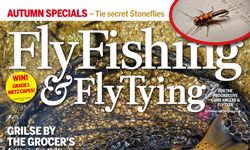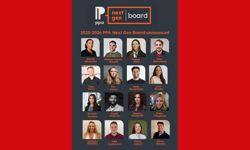
This article summarises the key principles underlying a successful consumer media business, with tips on how you can apply them to your own organisation. The innovators profiled in the report, for Media Makers Meet, are based in eleven different countries. Some are working with heritage brands that started in print many decades ago and have moved into other platforms. Others are more recent digital natives. A few are backed by large media companies, but many are privately owned mid-sized businesses, or even small start-ups.
What was interesting was the commonality of themes between different types of businesses. The twenty innovators have applied a selection of these twelve guiding principles. For each one, I have picked one example to illustrate.
1. Building editorial authority, trust and authenticity
The foundation of a media brand is audience trust. Successful businesses have built their authority over time, giving them permission to expand into related products and services.
- DECO PRO Teste, a consumer testing business in Portugal, carries out tests on 5,000 products and services each year. They also run public campaigns and lobbying plus provide an online complaint platform. This credibility supports magazine subscriptions and new digital revenues from online tools and licensing badges to manufacturers.
2. Creating multi format editorial content
Valuable content provided by a trusted brand can be transferred to new formats: audio, video, live or virtual events.
- Monocle started in London as a briefing on global affairs, business, culture and design. Along with print magazines and specials, they launched Monocle Radio, a 24/7 digital radio station with live news and magazine shows, plus a book imprint. Monocle run events and conferences, sell fashion and homeware online and even run shops in global cities, all targeting the same globally mobile, affluent, stylish community.
3. Reinventing digital subscription packages
New digital platforms are driving different consumer behaviour, so the traditional annual print subscription package has to evolve. Publishers are now including additional services and benefits for subscribers or offering multiple tiers at different prices.
- Roularta is a long established Belgian publisher with 30 news and lifestyle publications. They built Mijn Magazines, a single digital portal. Subscribers can pick one magazine for print or digital access, and also gain access to all other Roularta magazines (and archives) for themselves and up to two family members at the same address, all in one subscription package.
4. Defining new audiences and launching new brands
If you can identify an emerging consumer group with distinct needs that are not served by other media, you may have an opportunity to launch an entirely new brand.
- Sloft is a niche magazine for people living in small urban apartments (<70m2) who want practical design inspiration that was not available in mainstream interiors publishing. Based in Paris, Sloft features apartments around Europe and is on sale in New York. Content is available in print, web, e-newsletter, video, social media and live events.
5. Building a close member community
In niche markets, your audience have a close affinity with each other, and feel more proprietorial about your content. Smart publishers lean into this to gain detailed content feedback and enlist advocates to find new members.
- Republik is a Swiss 100% member-financed ad-free digital magazine. Members become co-owners of the company and can vote for representatives. Only paying members can participate in the discussion forum and interact with journalists. Annual ‘member get member’ campaigns introduce new members: 2023’s campaign brought in 3,000 members.
6. Driving growth through social media content
For global, younger audiences, social media is the best distribution channel. But content formats and tone need to be perfectly matched to drive engagement, and you may need to select one or two platforms to focus on.
- The News Movement, a UK-based start-up, focused on GenZ, specialises in “horizontal storytelling” providing context and a “peer to peer” format. They now have over 50 million views, mostly on TikTok and YouTube, with engagement measures twice the news industry average.
7. Creating branded content for corporate partners
A publisher’s skills in creating engaging content for a niche audience can also be provided to selected brands and partners keen to reach their community. Branded content is an increasingly important revenue source for consumer media.
- Pink News is an independent LGBTQ+ publisher from the UK, with a strong presence on Snapchat, Facebook, and TikTok. They have deliberately grown their partnership content revenues with clients like Heineken and Hinge, to replace more volatile social media advertising.
8. Extending into non-media services
Once you have a trusted brand providing valued content to a distinct audience, you can explore other services beyond media that meet their needs.
- The Local was launched in Sweden in 2004, catering to an audience of English-speaking ex-pats, then extended to other European countries, with 50,000 paying members. The Local has expanded into a jobs board and property rental listings, all catering to this niche segment.
9. Establishing a culture and organisation to attract talent and build productivity
In a turbulent media environment, with a premium on creativity and innovation, you need to offer a collaborative and stimulating workplace to attract the best talent.
- Berlingske Media, based in Denmark, and established in 1749, has changed its team structure, with single marketing, advertising and IT teams across its four titles, combining marketing and advertising into a single commercial unit to grow revenues. Each publication has a fortnightly, data driven session with editorial, IT, product managers and audience teams to prioritise projects and ensure effective implementation. And disciplines meet up cross-company to identify where solutions can be scaled across the organisation.
10. Experimenting with AI
Many publishers are testing AI in content production processes. But there is huge potential from using AI to analyse audience and content behaviour data to gain valuable insights.
- Freeda Media, based in Italy, produce social media content that is consumed by 150m people worldwide. They collect over 200 data points on each piece of content and use machine learning to measure how creative and technical elements influence performance. This insight is used internally, and became Freeda Platform, a tool for brands to understand consumers on social media. Freeda Platform now accounts for 70% of company revenue, with CAGR of 122% since launch.
11. Expanding internationally
It is becoming easier for publishers to translate digital content to new territories and language groups, especially when targeting a younger or more globally mobile audience.
- Giallozafferano started as a recipe website in Italy (part of Mondadori). In 2012, they launched a site in English with 500 video recipes, then collaborated with 50 social media food creators and launched the GZ food creator award. The English site now has 25 million followers and is the world #4 on social media.
12. Targeted acquisitions (and fundraising)
Many publishers started out from a crowdfunding campaign or have appealed to their audience for investment. Larger organisations have used VC funding rounds to help fuel their organic growth and targeted acquisitions.
- One Football, based in Germany, distributes quality video and digital content from football clubs and leagues, and brands to over 20m monthly active users. They received series D funding in April 2022 and acquired Gloria, a women’s football start-up, in September 2022.
- At the other end of the scale, Mill Media, a UK local news start-up, raised £350k from private investors who were among its 5,000 paying members. They have used these funds to launch a news service in Birmingham.
Benchmarking your specialist consumer media business
So, how can you apply these insights to your media business? The foundation is deep understanding of your audience niche, and their information and entertainment needs. Then you need to deliver relevant, valuable content in the formats (digital, audio, video) and on the platforms (web, social, live) that they prefer.
Be creative about how you package up subscriptions to suit how your audience prefer to consume your content and pay for it. And watch out for emerging groups that could be served by a new media brand.
Building a sense of community or membership will drive recurring subscription revenues and give you permission to expand into related products and services. And the expertise you develop can be converted into revenues from branded content. But you will not be able to implement your plans without creating a work environment that attracts the right talent and supports them to be productive.
Consider how your content could cross borders – it is increasingly simple to translate concepts and articles to new countries or languages. And when you are planning to raise investment funds, don’t forget to ask your own community.

The Media Makers Meet report can be downloaded from here.
This article was first published in InPublishing magazine. If you would like to be added to the free mailing list to receive the magazine, please register here.












